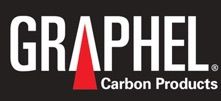Tooling Types – Grinding Basics

There are many different types of tooling, the most common being work holding tools. Work holding tools include jigs and fixtures; cutting tools for milling and grinding machines; dies for cold forming, forging and extrusion machines; and welding and inspection fixtures. In this month’s blog, we are going to look at the basics of grinding.
Grinding, or abrasive machining, is the process of removing metal in the form of minute chips by the action of irregularly shaped abrasive particles. These particles may be in bonded wheels, coated belts, or simply loose.
Grinding wheels are composed of thousands of small abrasive grains held together by a bonding material. Each abrasive grain is a cutting edge. As the grain passes over the work piece it cuts a small chip, leaving a smooth, accurate surface. As each abrasive grain becomes dull, it breaks away from the bonding material.
Two types of abrasives are used in grinding wheels: natural and manufactured. Except for diamonds, manufactured abrasives have almost entirely replaced natural abrasive materials. Even natural diamonds have been replaced in some instances by synthetic diamonds.
The manufactured abrasives most commonly used in grinding wheels are aluminum oxide, silicon carbide, cubic boron nitride, and diamond.
Abrasive grains are held together in a grinding wheel by a bonding material. The bonding material does not cut during grinding operation. Its main function is to hold the grains together with varying degrees of strength. Standard grinding wheel bonds are vitrified, resinoid, silicate, shellac, rubber and metal.
The size of an abrasive grain is important because it influences stock removal rate, chip clearance in the wheel and surface finish obtained.
The grade of a grinding wheel is a measure of the strength of the bonding material holding the individual grains in the wheel. It is used to indicate the relative hardness of a grinding wheel. Grade or hardness refers to the amount of bonding material used in the wheel, not to the hardness of the abrasive.
The structure of a grinding wheel refers to the relative spacing of the abrasive grains; it is the wheel’s density. There are fewer abrasive grains in an open-structure wheel than in a closed-structure wheel. A number from 1 to 15 designates the structure of a wheel. The higher the number, the more open the structure will be; and the lower the number, the denser the structure will be.
All grinding wheels are breakable, and some are extremely fragile. Great care should be taken in handling grinding wheels. New wheels should be closely inspected immediately after receipt to make sure they were not damaged during transit. Grinding wheels should also be inspected prior to being mounted on a machine.
